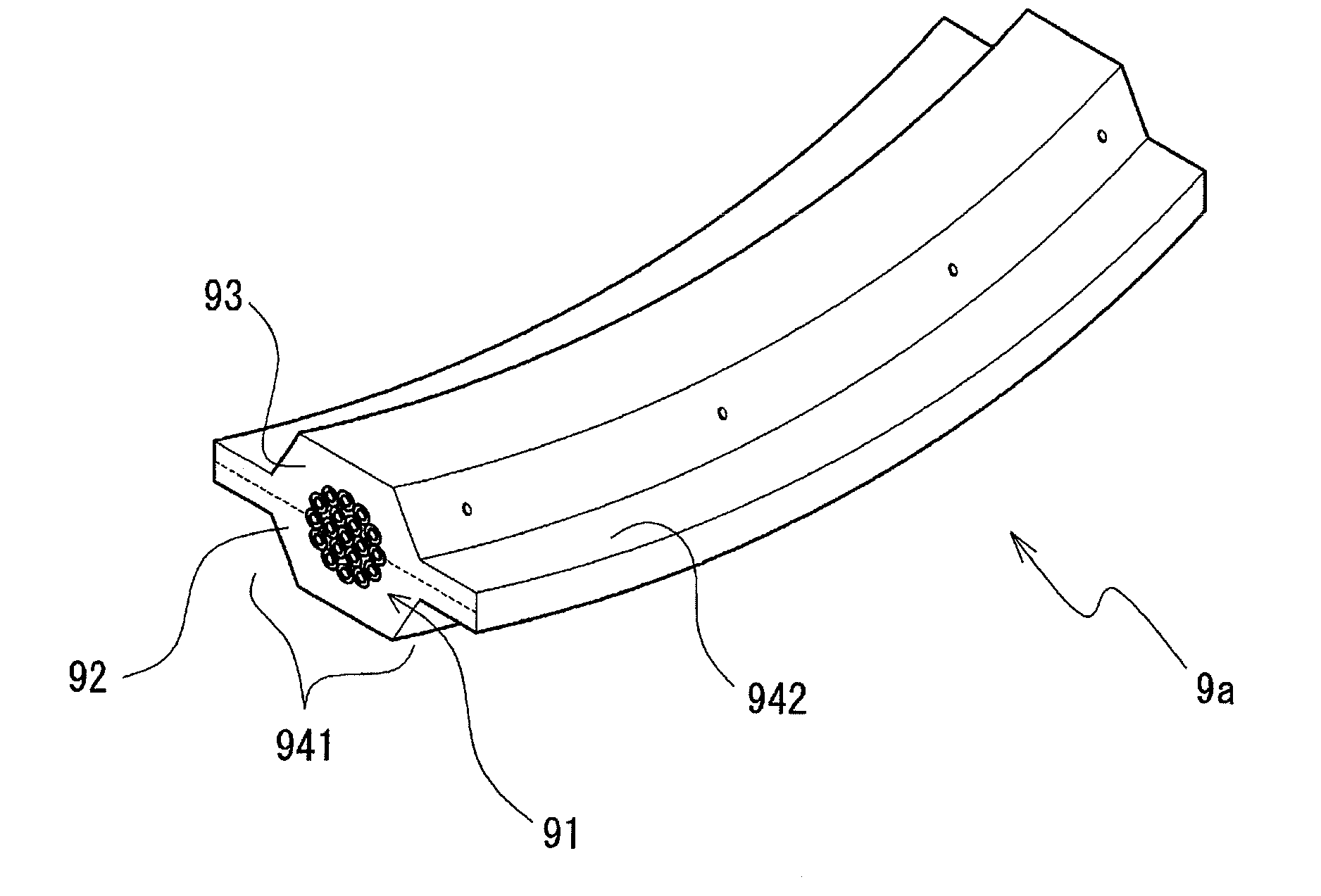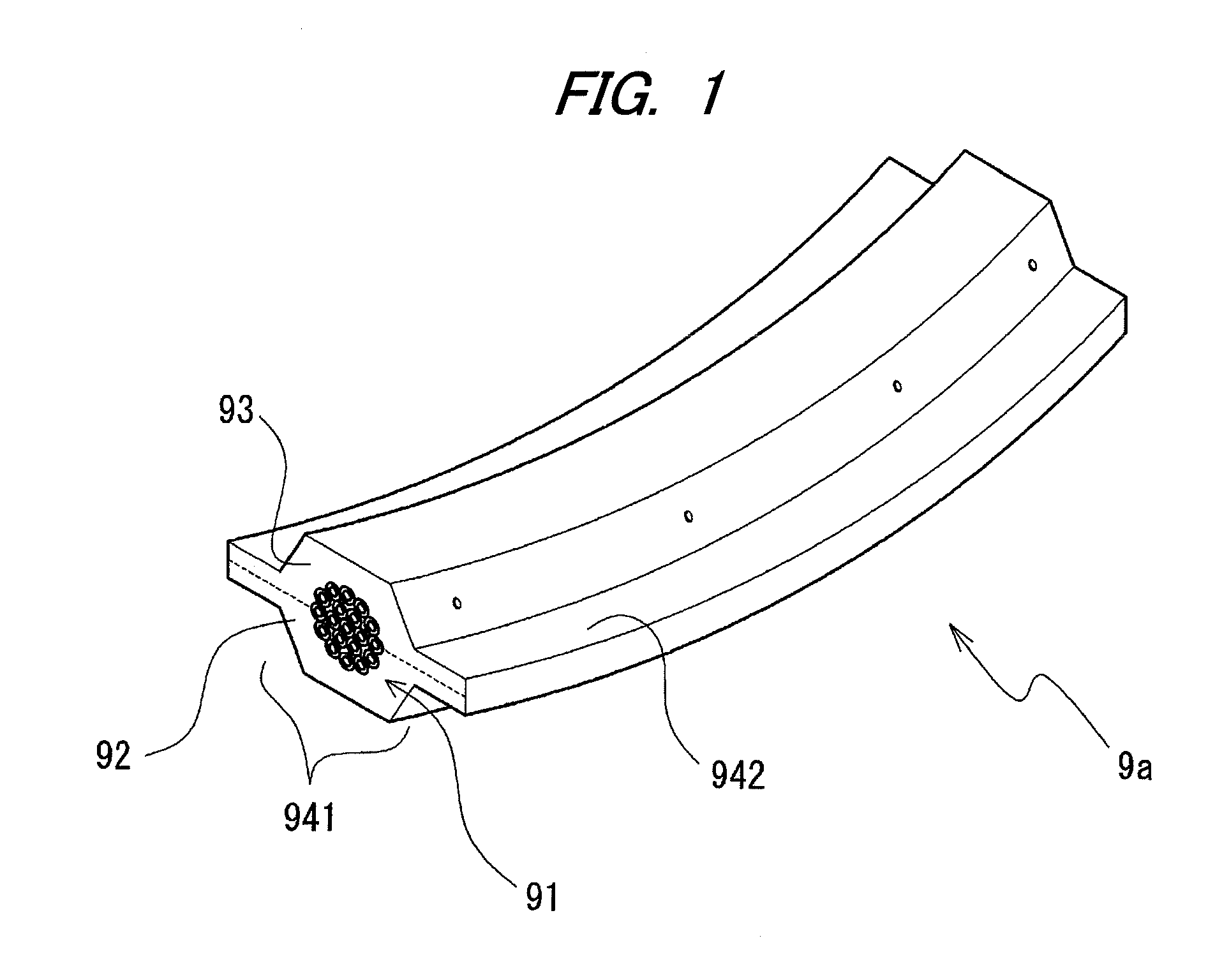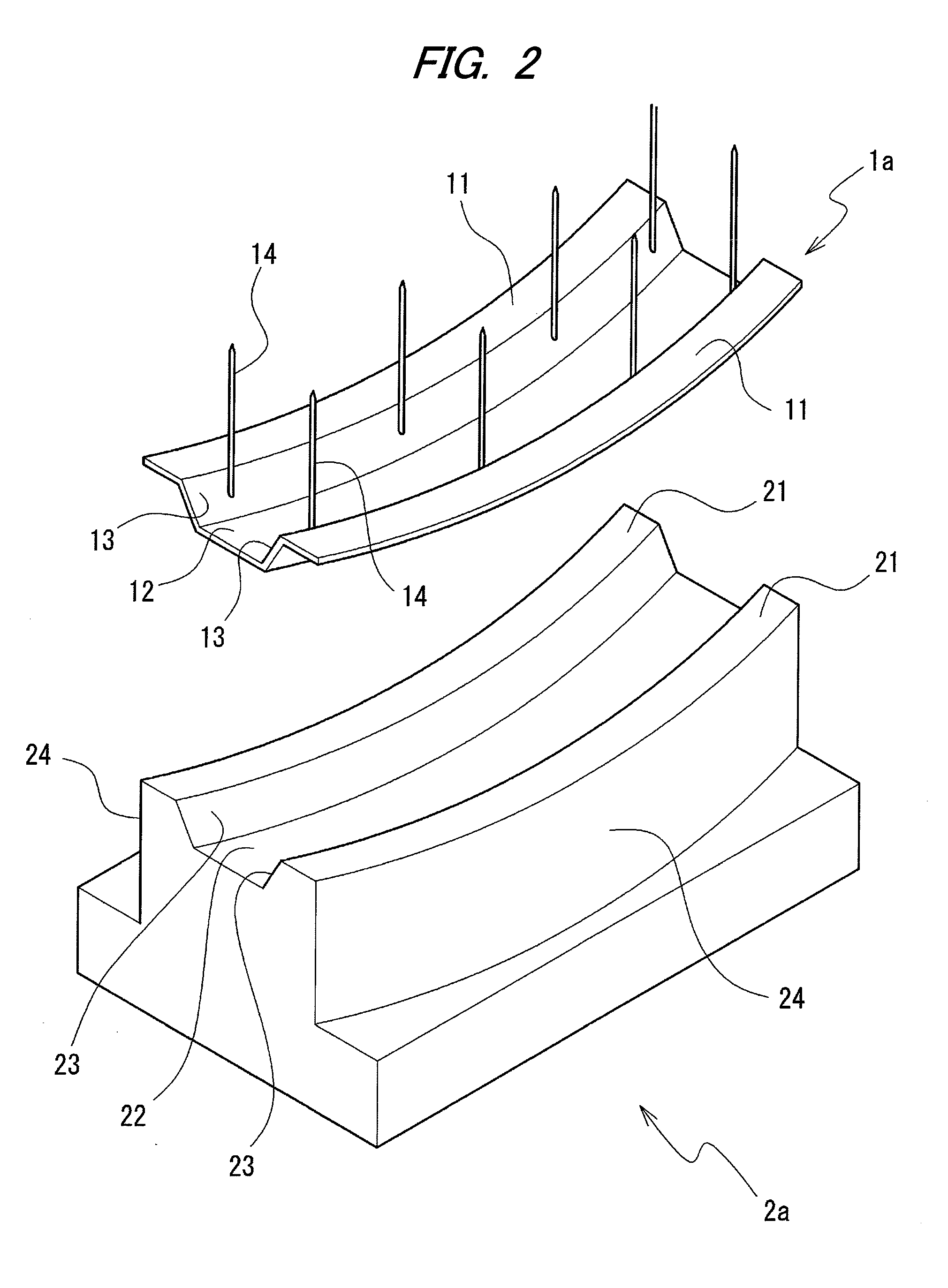Method of manufacturing wire harness
a manufacturing method and wire harness technology, applied in the direction of insulating conductors/cables, cables, insulated conductors, etc., can solve the problems of increasing the manufacturing cost or the price of the form-keeping member or the protector, increasing the price of the wire harness equipped with the form-keeping member or the protector, and increasing the process cost, so as to reduce the manufacturing cost of the form-keeping member or the component cost, prevent an increase in equipment cost, and simple structure
- Summary
- Abstract
- Description
- Claims
- Application Information
AI Technical Summary
Benefits of technology
Problems solved by technology
Method used
Image
Examples
first embodiment
[0095]The upper mold 3a is a member that can press-form and heating the thermoplastic material 92 and the other thermoplastic material 93, together with the lower mold 2a. Further, the thermoplastic material 92 and the other thermoplastic material 93 are press-formed in a given cross-sectional shape, and the thermoplastic material 92 and the other thermoplastic material 93 are welded. A groove having a given cross-sectional shape is formed on the lower side surface (upper surface in FIG. 3) of the upper mold 3a. The center line of the groove is formed in the shape of the center line of wire harness 9a according to the present invention. A curved shape having a given curvature is shown in FIG. 3.
[0096]The bottom of the groove is formed in substantially the same shape as the cross-sectional shape of wire harness 9a according to the first embodiment of the present invention. The groove-shaped recessed portion (the portion formed by a second pressing portion 32 and a third pressing port...
second embodiment
[0164]FIG. 8 is an external perspective view schematically showing the configurations of the upper mold 3b and the second holder 4b that are used in the method of manufacturing a wire harness according to the present invention. In FIG. 8, the upper side in the figure is the side opposite to the lower mold 2a. For the convenience of description, the upper side in FIG. 8 is the lower side of the upper mold 3b and the second holder 4b and the lower side in FIG. 8 is the upper side of the upper mold 3b and the second holder 4b.
[0165]The second holder 4b is a member having a function of press-forming the thermoplastic material 92 or the other thermoplastic material 93 in given shapes or a function of maintaining a portion of the manufactured first wire harness 9a in a given shape, in the process of manufacturing the first wire harness 9a.
[0166]A groove-shaped recessed portion (the portion composed of the sides 43 and a bottom 42) which can accommodate a portion of a wire 91 (in other w...
third embodiment
[0200]FIGS. 13 to 16 are sectional views schematically showing processes of the method of manufacturing a wire harness according to the present invention, respectively. Specifically, FIG. 13 is a view showing when the thermoplastic material 92, a portion of the wire 91, the other thermoplastic material 93, and a reinforcing thermoplastic material 95 are disposed between the second holder 4b and the first holder 1a. FIG. 14 is a view showing when the second holder 4b and the first holder 1a where the thermoplastic material 92, the portion of the wire 91, the other thermoplastic material 93, and the reinforcing thermoplastic material 95 are disposed are disposed therebetween on the lower mold 2a. FIG. 15 is a view showing when the thermoplastic material 92, the portion of the wire 91, the other thermoplastic material 93, and the reinforcing thermoplastic material 95 are pressed by the upper mold 3b and the lower mold 2a. FIG. 16 is a view showing when the portion of the manufactured s...
PUM
| Property | Measurement | Unit |
|---|---|---|
| temperature | aaaaa | aaaaa |
| melting point | aaaaa | aaaaa |
| melting point | aaaaa | aaaaa |
Abstract
Description
Claims
Application Information
 Login to View More
Login to View More - R&D
- Intellectual Property
- Life Sciences
- Materials
- Tech Scout
- Unparalleled Data Quality
- Higher Quality Content
- 60% Fewer Hallucinations
Browse by: Latest US Patents, China's latest patents, Technical Efficacy Thesaurus, Application Domain, Technology Topic, Popular Technical Reports.
© 2025 PatSnap. All rights reserved.Legal|Privacy policy|Modern Slavery Act Transparency Statement|Sitemap|About US| Contact US: help@patsnap.com



